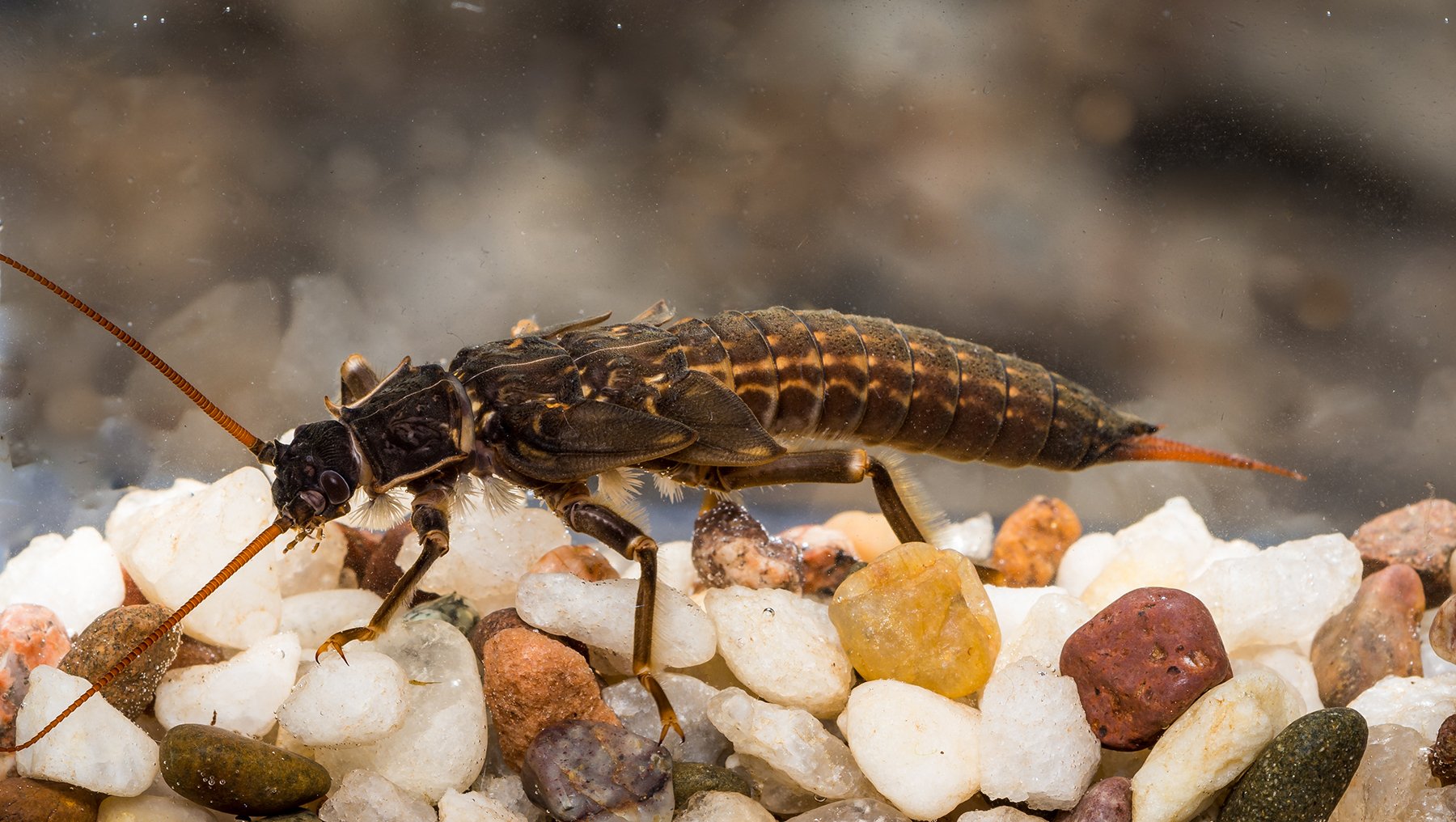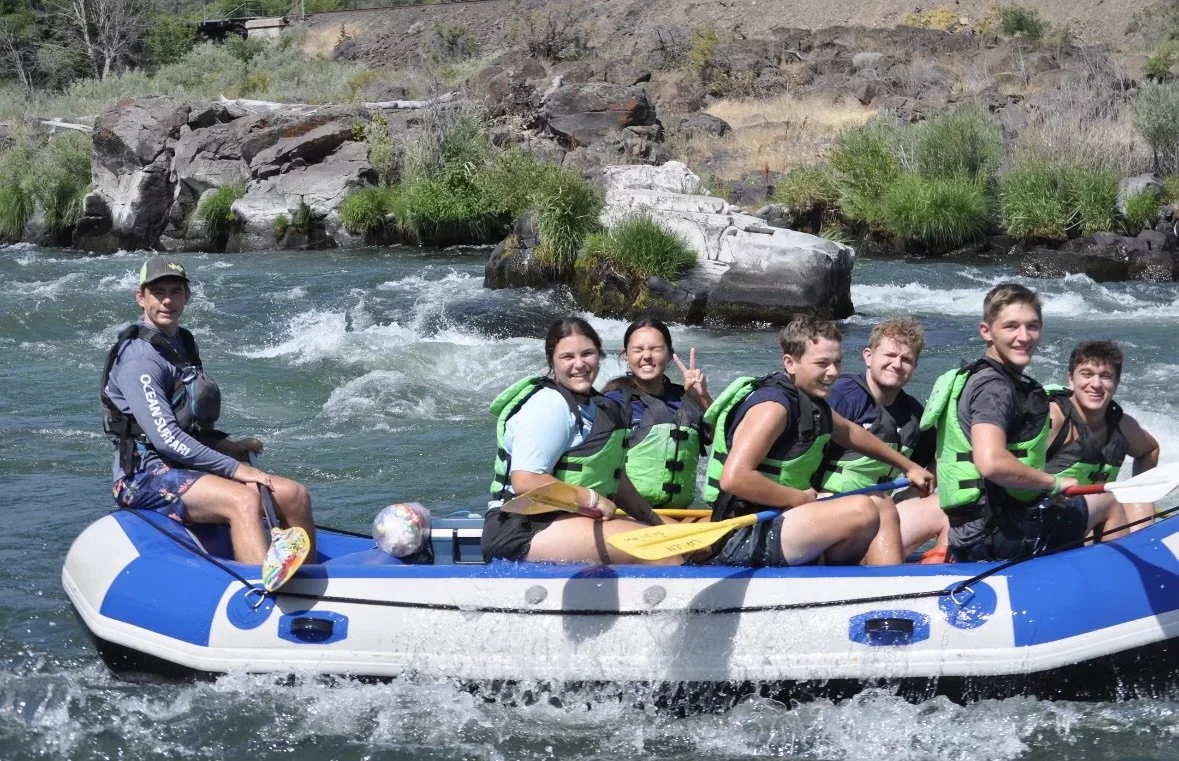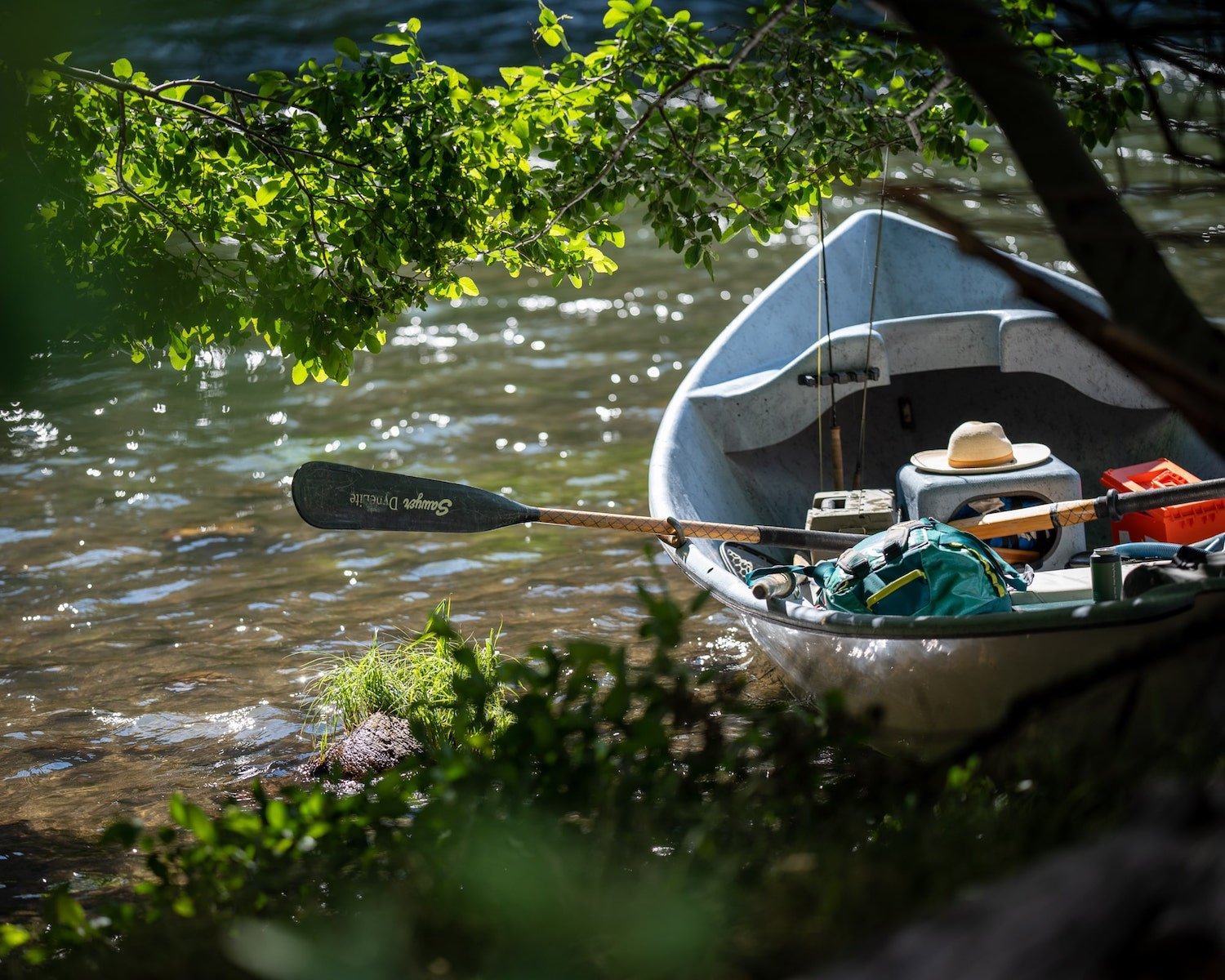From Riverbed to the Lab: How the DRA Does Insect Sampling
Up close and personal: a stonefly in its element. Photo courtesy of Rick Hafele.
An Inside Look into Our Benthic Macroinvertebrate Sampling Protocol
By Hannah Camel, DRA staff biologist
Macroinvertebrate sampling provides valuable insights into the health of river ecosystems, acting as an indicator for water quality and overall ecological health. At the Deschutes River Alliance, we employ scientifically rigorous methods that align with both Oregon Department of Environmental Quality (DEQ) and Environmental Protection Agency (EPA) standards for the Pacific Northwest to ensure accurate, reliable results. Here’s an inside look at how and why we carry out this essential work.
How We Sample
Our macroinvertebrate sampling begins by selecting specific sampling locations along the river. We currently collect samples at three locations: near Warm Springs boat ramp, Kaskela, and Maupin. These areas provide a representative look at the ecological diversity within the Deschutes River. At each site, we use a D-frame kick net to collect eight randomly selected one-square-foot benthic samples from riffles. These riffles are areas where the water is turbulent and oxygen levels are high and typically support a diverse macroinvertebrate community.
After gathering these samples, we composite them into a single, representative sample for each location. This compositing process involves combining all eight samples and preserving them in 90% ethyl alcohol, preventing degradation and ensuring the samples remain intact until they reach the lab for analysis. Additionally, a complete duplicate sample is taken at one site each sampling trip for quality control and precision checks so sampling variability can be determined.
Lab Analysis
Our samples are then sent off to Aquatic Biology Associates in Corvallis Oregon, a lab specializing in freshwater macroinvertebrate identification and statistical data analysis. Here, lab technicians extract a randomly selected subsample of 500 organisms from each composite sample. Each organism in the subsample is then counted and identified to the lowest possible taxonomic unit, usually genus or species. This allows us to gather detailed information about the specific ecological makeup of each site. In addition to the primary sample, the field duplicate and an inner-lab duplicate are analyzed for a minimum of one site. This quality control measure provides information about sampling and lab variability so sampling and lab precision can be determined. This allows us to determine if differences between sites, or changes over time, are due to actual changes in the ecological condition or the result of inconsistencies in sampling methodology.
Why We Do it: Understanding River Health Through Science
Macroinvertebrates are sensitive to environmental changes, making them excellent bioindicators for assessing water quality and ecosystem health. Different species have varying tolerances to pollutants, temperature changes, and dissolved oxygen levels. By analyzing the types and abundance of macroinvertebrates present at each site, we can infer a great deal about the water quality and any potential issues. For example, the presence of pollution-tolerant species in a sample might indicate poor water quality, while a diverse array of pollution-sensitive species generally signals a healthy environment. By collecting this data over the last decade, we are able to track long-term trends, spot emerging threats, and respond to ecological changes in the Deschutes River.
More From The Blog
Subscribe the the DRA Newsletter
The Deschutes River Alliance is your focused voice to protect the lower Deschutes River, its cold water flows and the fish and wildlife that are sustained by them. We send regular emails with important data and news about the lower Deschutes River. We will not sell or loan your contact information to others.
How to Support the DRA
Everyone wants clean, healthy water in the Deschutes River. Oregonians cherish our clean and healthy waterways to provide drinking water, wildlife habitat and recreational activities. The lower Deschutes River is a federally designated Wild & Scenic River, and a national treasure. It must be protected for the environmental and economic health of Central Oregon. We believe by working together we can return the lower Deschutes River to full health.






















